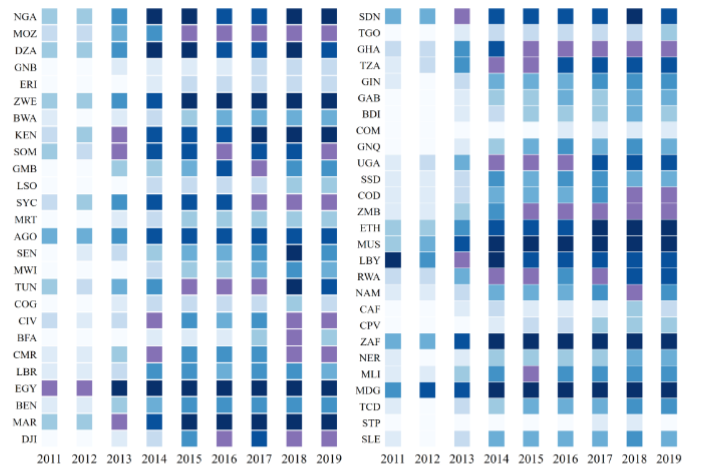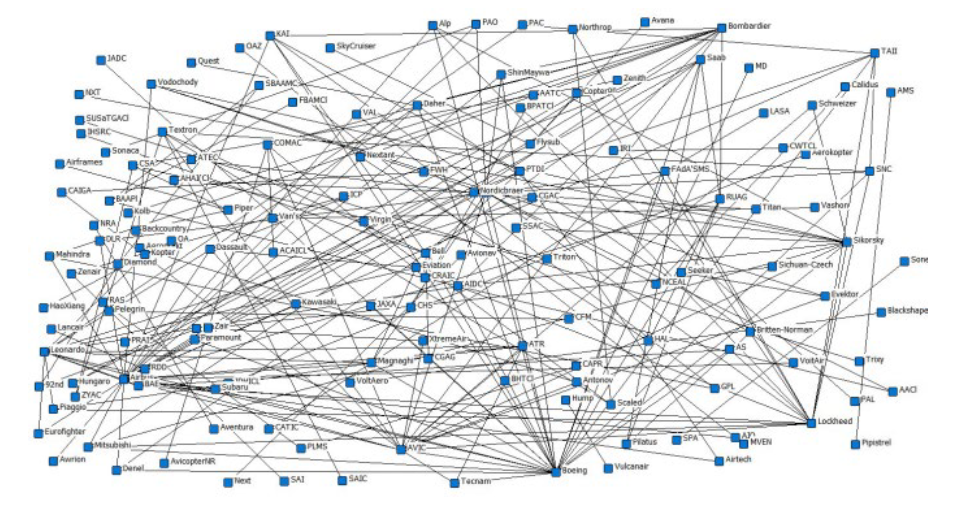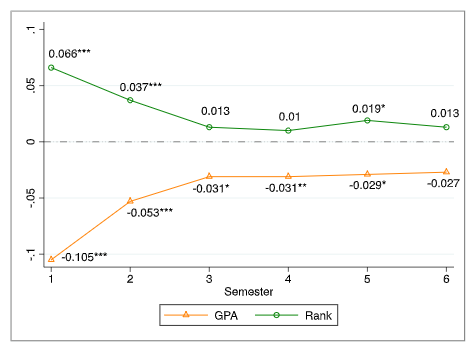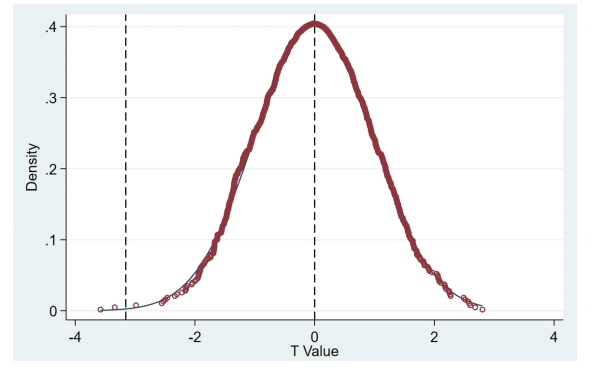COVID-19, Financing Constraints and Total Factor Productivity of Enerprises
Abstract
As the COVID-19 epidemic swept the world in early 2020, it is worth watching how it affects the total factor productivity of enterprises. Based on the theory of information asymmetry and the data of A-share listed companies from 2014 to 2021, this paper conducts an empirical study on the relationship between COVID-19 and the total factor productivity of enterprises. The results show that the impact of the COVID-19 epidemic can significantly reduce the total factor productivity of enterprises, and the conclusion is still true after a series of robustness tests. Taking the financing constraint as an intervening variable, it clearly reveals a transmission mechanism, that is to say, the impact of the COVID-19 epidemic exacerbates the financing constraint of the enterprise, thus it makes the total factor productivity of the enterprise reduce. It is further found that the above effects are more obvious for small and medium-sized enterprises and non-intelligent enterprises. Based on this, the government should implement some active economic development policies to create a free, relaxed and orderly market environment for enterprise financing. At the same time, enterprises should not only pay attention to digital and intelligent development, and transform into technology-intensive enterprises, but also strengthen the awareness of worry. Enterprises should store "more grain" for preparing for the cold winter.
Cite This Paper
Ye, L., & Sun, Y. (2023). COVID-19, Financing Constraints and Total Factor Productivity of Enerprises. Review of Economic Assessment, 2(2), 14. doi:10.58567/rea02020004
Ye, L.; Sun, Y. COVID-19, Financing Constraints and Total Factor Productivity of Enerprises. Review of Economic Assessment, 2023, 2, 14. doi:10.58567/rea02020004
Ye L, Sun Y. COVID-19, Financing Constraints and Total Factor Productivity of Enerprises. Review of Economic Assessment; 2023, 2(2):14. doi:10.58567/rea02020004
Ye, Ling; Sun, Yuxi 2023. "COVID-19, Financing Constraints and Total Factor Productivity of Enerprises" Review of Economic Assessment 2, no.2:14. doi:10.58567/rea02020004
Show Figures
Share and Cite
Article Metrics
References
- Aghion, P., Cai, J., Dewatripont, M., Du, L., Harrison, A., & Legros, P. (2015). Industrial policy and competition. American economic journal: macroeconomics, 7(4), 1-32. https://doi.org/10.1257/mac.20120103
- Aum, S., Lee, S. Y. T., & Shin, Y. (2021). COVID-19 doesn’t need lockdowns to destroy jobs: The effect of local outbreaks in Korea. Labour Economics, 70, 101993. https://doi.org/10.1016/j.labeco.2021.101993
- Baker, S. R., Farrokhnia, R. A., Meyer, S., Pagel, M., & Yannelis, C. (2020). How does household spending respond to an epidemic? Consumption during the 2020 COVID-19 pandemic. The Review of Asset Pricing Studies, 10(4), 834-862. https://doi.org/10.1093/rapstu/raaa009
- Baron, R. M., & Kenny, D. A. (1986). The moderator-mediator variable distinction in social psychological research: Conceptual, strategic, and statistical considerations. Journal of Personality and Social Psychology, 51, 1173-1182. https://doi.org/10.1037/0022-3514.51.6.1173
- Barrero, J. M., Bloom, N., Davis, S. J., & Meyer, B. H. (2021, May). COVID-19 is a persistent reallocation shock. In AEA Papers and Proceedings (Vol. 111, pp. 287-291). 2014 Broadway, Suite 305, Nashville, TN 37203: American Economic Association. https://doi.org/10.1257/pandp.20211110
- Barua, S. (2020). Understanding Coronanomics: The economic implications of the coronavirus (COVID-19) pandemic. Available at SSRN 3566477. https://doi.org/10.1353/jda.2021.0073
- Cai, W., & Ye, P. (2020). How does environmental regulation influence enterprises’ total factor productivity? A quasi-natural experiment based on China’s new environmental protection law. Journal of Cleaner Production, 276, 124105. https://doi.org/10.1016/j.jclepro.2020.124105
- Chen, H., Guo, W., Feng, X., Wei, W., Liu, H., Feng, Y., & Gong, W. (2021). The impact of low-carbon city pilot policy on the total factor productivity of listed enterprises in China. Resources, Conservation and Recycling, 169, 105457. https://doi.org/10.1016/j.resconrec.2021.105457
- Clark, R. L., Lusardi, A., & Mitchell, O. S. (2021, May). Financial fragility during the COVID-19 pandemic. In AEA Papers and Proceedings (Vol. 111, pp. 292-96). https://doi.org/10.1257/pandp.20211000
- Comin, D., & Hobijn, B. (2010). An exploration of technology diffusion. American economic review, 100(5), 2031-2059. https://doi.org/10.1257/aer.100.5.2031
- Dai, L., Zhang, J., & Luo, S. (2022). Effective R&D capital and total factor productivity: Evidence using spatial panel data models. Technological Forecasting and Social Change, 183, 121886. https://doi.org/10.1016/j.techfore.2022.121886
- Demir, B., & Javorcik, B. (2020). Trade finance matters: evidence from the COVID-19 crisis. Oxford Review of Economic Policy, 36(Supplement_1), S397-S408. https://doi.org/10.1093/oxrep/graa034
- Ferrando, A., & Ruggieri, A. (2018). Financial constraints and productivity: Evidence from euro area companies. International Journal of Finance & Economics, 23(3), 257-282. https://doi.org/10.1002/ijfe.1615
- Guo, Y., & Li, X. (2023). The impact of greater VAT tax neutrality on total factor productivity: Evidence from China’s VAT credit refund reform in 2018. Economic Analysis and Policy. https://doi.org/10.1016/j.eap.2023.04.026
- Han, J., & Shen, Y. (2015). Financial development and total factor productivity growth: Evidence from China. Emerging Markets Finance and Trade, 51(sup1), S261-S274. https://doi.org/10.1080/1540496X.2014.998928
- Hsieh, C. T., & Klenow, P. J. (2009). Misallocation and manufacturing TFP in China and India. The Quarterly journal of economics, 124(4), 1403-1448. https://doi.org/10.1162/qjec.2009.124.4.1403
- Junior, A. A. B., Faria, W. R., Montenegro, R. L. G., Bahia, D. S., & Gonçalves, E. (2020). Research and development, productive structure and economic effects: Assessing the role of public financing in Brazil. Economic Modelling, 90, 235-253. https://doi.org/10.1016/j.econmod.2020.04.017
- Larrain, M., & Stumpner, S. (2017). Capital account liberalization and aggregate productivity: The role of firm capital allocation. The Journal of Finance, 72(4), 1825-1858. https://doi.org/10.1111/jofi.12497
- Levine, O., & Warusawitharana, M. (2021). Finance and productivity growth: Firm-level evidence. Journal of Monetary Economics, 117, 91-107. https://doi.org/10.1016/j.jmoneco.2019.11.009
- Levinsohn, J., & Petrin, A. (2003). Estimating production functions using inputs to control for unobservables. The review of economic studies, 70(2), 317-341. https://doi.org/10.1111/1467-937X.00246
- Liu, S., Zhuo, Y., Shen, X., Cai, M., & Yang, Y. (2023). The impact of declined social insurance contribution rate on enterprise total factor productivity: Evidence from China. International Review of Financial Analysis, 87, 102624. https://doi.org/10.1016/j.irfa.2023.102624
- Schmöller, M. E., & Spitzer, M. (2021). Deep recessions, slowing productivity and missing (dis-) inflation in the euro area. European Economic Review, 134, 103708. https://doi.org/10.1016/j.euroecorev.2021.103708
- Vinci, D. L., Polidori, C., & Polidori, P. (2020). The healthcare and pharmaceutical vulnerability emerging from the new Coronavirus outbreak. European Journal of Hospital Pharmacy, 27(3), 129-130. http://dx.doi.org/10.1136/ejhpharm-2020-002278
- Wang, L., Ma, P., Song, Y., & Zhang, M. (2023). How does environmental tax affect enterprises’ total factor productivity? Evidence from the reform of environmental fee-to-tax in China. Journal of Cleaner Production, 137441. https://doi.org/10.1016/j.jclepro.2023.137441
- Wang, Y., & Kong, Q. (2019). Financial constraints, institutions, and firm productivity: Evidence from China. Emerging Markets Finance and Trade, 55(11), 2652-2667. https://doi.org/10.1080/1540496X.2019.1577236
- Yang, Y., Peng, F., Wang, R., Guan, K., Jiang, T., Xu, G., ... & Chang, C. (2020). The deadly coronaviruses: The 2003 SARS pandemic and the 2020 novel coronavirus epidemic in China. Journal of autoimmunity, 109, 102434. https://doi.org/10.1016/j.jaut.2020.102434
- Ying, W., Qian, Y., & Kun, Z. (2021). Drugs supply and pharmaceutical care management practices at a designated hospital during the COVID-19 epidemic. Research in Social and Administrative Pharmacy, 17(1), 1978-1983. https://doi.org/10.1016/j.sapharm.2020.04.001
- Zhang, S., Luo, J., Huang, D. H., & Xu, J. (2023). Market distortion, factor misallocation, and efficiency loss in manufacturing enterprises. Journal of Business Research, 154, 113290. https://doi.org/10.1016/j.jbusres.2022.08.054
- Zhang, T., Xu, S., & Zhang, S. (2022). Are export tax rebates patronage for Chinese firms? An analysis of productivity. China Economic Review, 75, 101844. https://doi.org/10.1016/j.chieco.2022.101844



